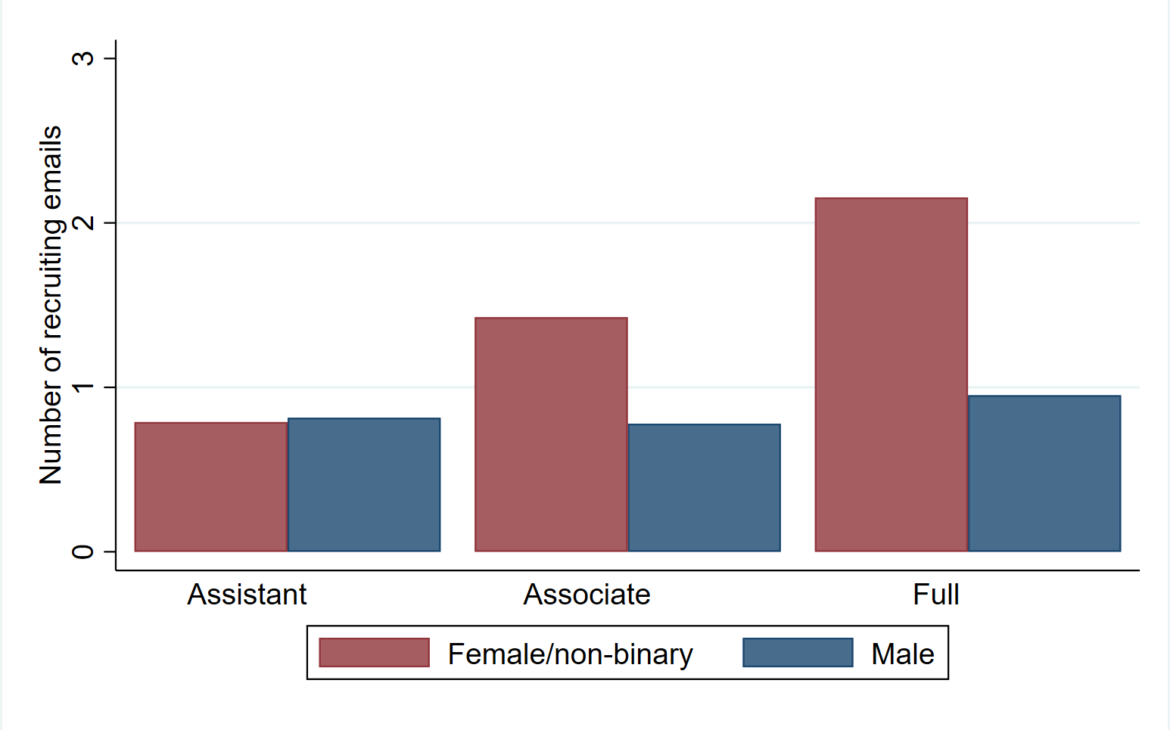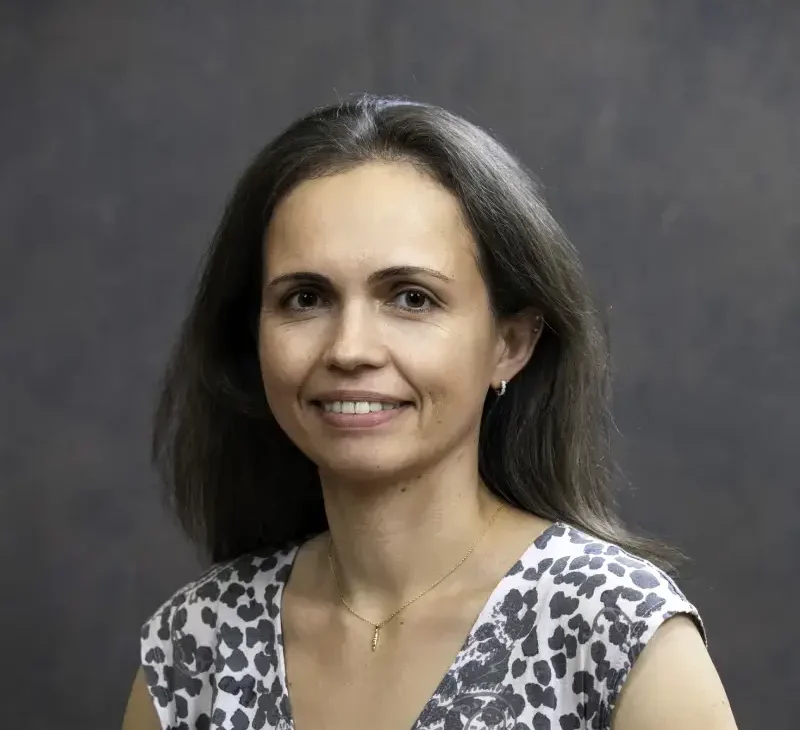Informal recruiting of men versus women
I routinely hear talk about female economists being in much more demand than male economists. I decided to gather some data to test whether this was the case. On October 4, I distributed a Qualtrics survey through Twitter and Bluesky, asking how many “personal (non-mass) emails have you received [in the past year] inquiring about your interest in a specific faculty position and/or inviting you to apply”? I got almost 360 responses, of which 342 people identified as being tenure-track assistant, associate, or full professors (or equivalent).

The first fact is that about 60% of respondents reported receiving no informal outreach emails. Among assistant professors, the share was roughly the same for male versus female professors. The difference was slightly larger at the associate level, but was most pronounced at the full level, with only 41% of full female professors reporting no outreach compared to almost 60% among men.
There are a lot of caveats here, of course (there could be systematic differences in research quality, age, or other characteristics), but them’s the data! The rates among full men v. women are also not statistically different from each other (N=81)

Next, the intensive margin. The question about the number of emails was multiple choice to minimize cognitive load, and I did some recording to convert to a numeric scale, which you can read about at the end of this post. Here, the differences are starker, both among associates and fulls. Associate women receive about 0.65 more emails than associate men, and full women receive about 1.2 more emails than full men. This last difference is statistically significant (p=0.051).
Again, we don’t necessarily have enough information for a clear interpretation (e.g., is this truly more demand for women or just committees reaching out so they can say they tried?), but the data do point to women being recruited more, at least in the initial stages of a search.
Some data notes: The survey was framed as being about “informality in recruiting” to minimize the possibility of selection. Seven people identified as non-binary, and I included them with the “female” category. Grouping non-binary individuals with males yields very similar results. The options for number of emails was “None”, “1-2”, “3-4”, “5-9” and “10 or more”. These were re-coded as 0, 1.5, 3.5, 7.5, and 12.5, respectively. Among the respondents, there were 97 male assistant professors, 78 female/non-binary assistant professors, 52 male associate professors, 34 female assistant professors, 54 male full professors, and 27 female full professors.




Comments are closed.